- gallery
Historical Parliament building renovation
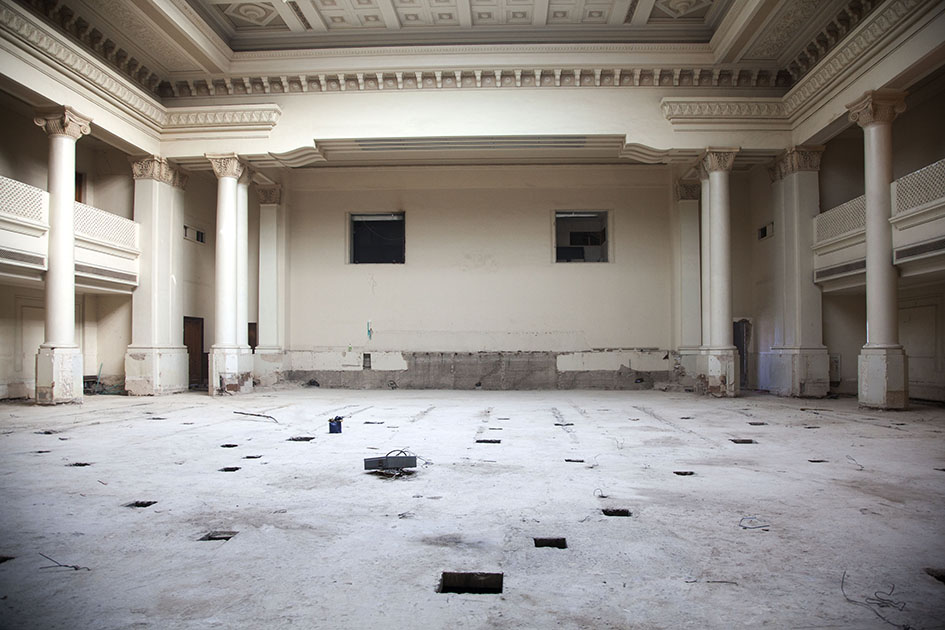
Old Parliament main hall which is closely related to the multi-year, dramatic history of the fight for independence of the country - looks like this today. Photo by N. Alavidze.
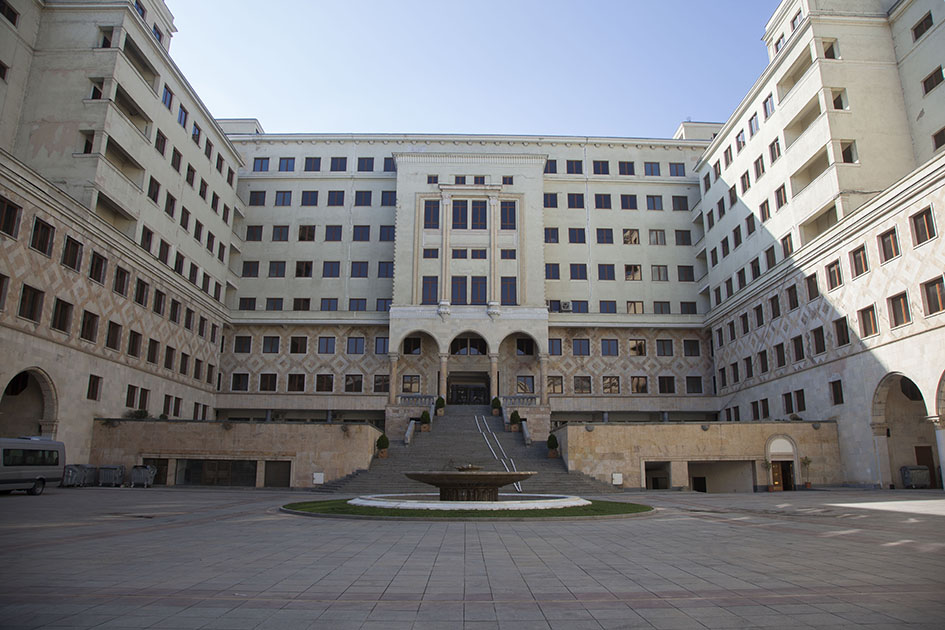
The courtyard of the Parliament. According to the changes in the Georgian Constitution, the Parliament moved to new building in Kutaisi in May 2012. Saakashvili’s government planned to sale the old building in Tbilisi but an investor was not found. Photo by N. Alavidze.
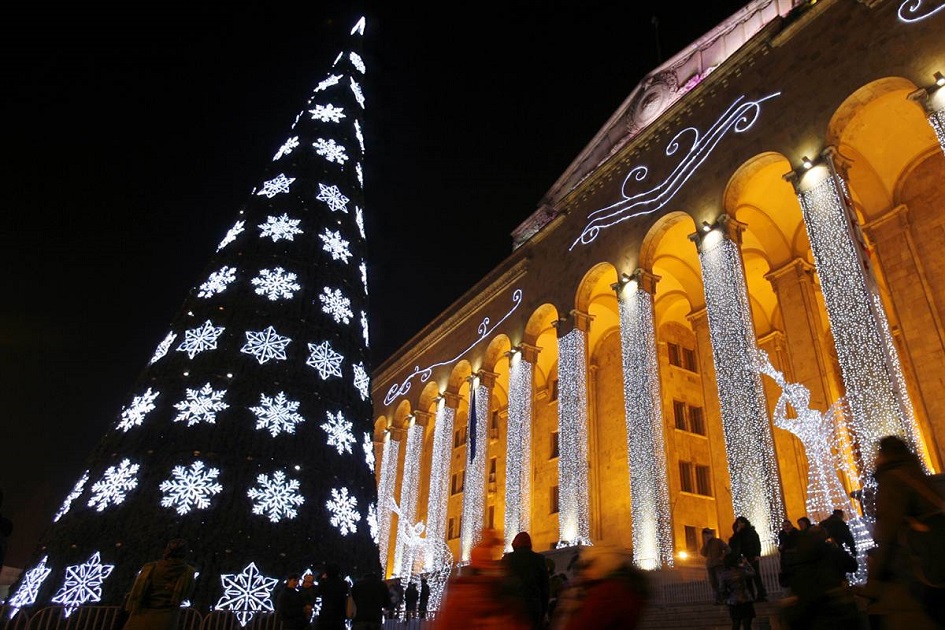
Old Parliament building on Rustaveli ave., the central street of Tbilisi, has experienced almost all global changes in the country since 1938. Photo by Getty Images.
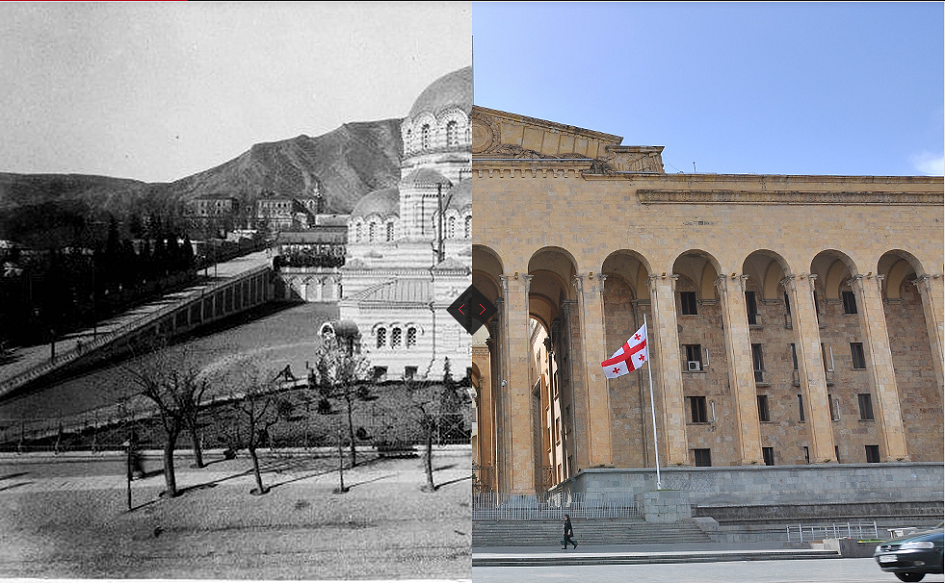
The Parliament building stands on the place of so called Soboro, a military church, built in 1865-1866. In 1930 the church was demolished by Soviet authorities. The construction of the House of Government began in1938. Image by feradi.info.
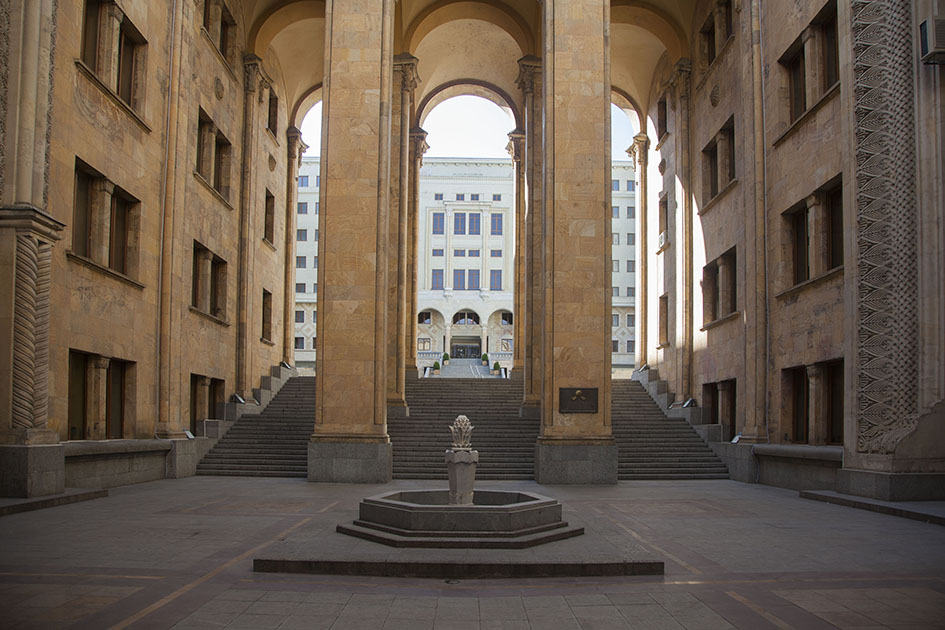
Students of the Georgian military school, Iunkers, deceased during Soviet occupation, were buried in the yard of the church in February 1921. The graves are under the building foundation. Photo by N. Alavidze.
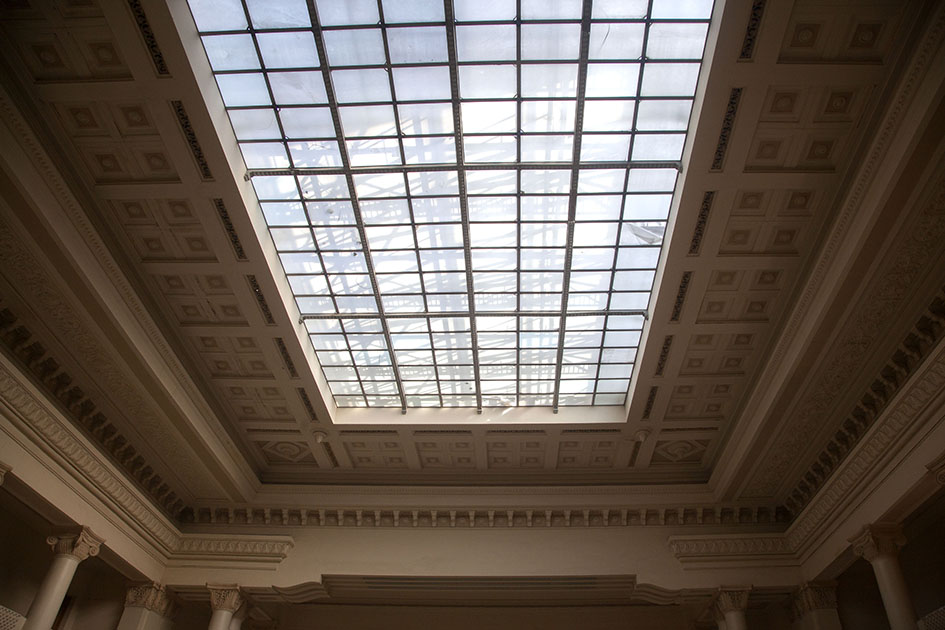
Old Parliament building consists of two parts: upper and lower. First the upper building was finished in 1938.The second Rustaveli ave. frontal part was built in 1958. During the Soviet period, building used to be the venue of Supreme Council of the Soviet Republic of Georgia. Photo by N. Alavidze.
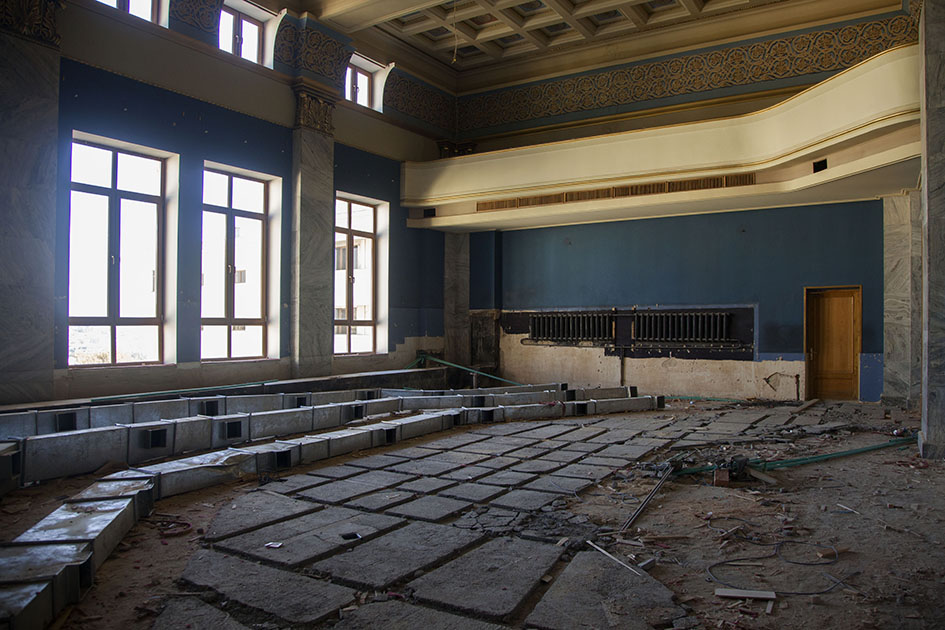
This is the Ilia Chavchavadze Hall. The staff of Parliament has no information who ruined the main halls during 2012. Photo by N. Alavidze.
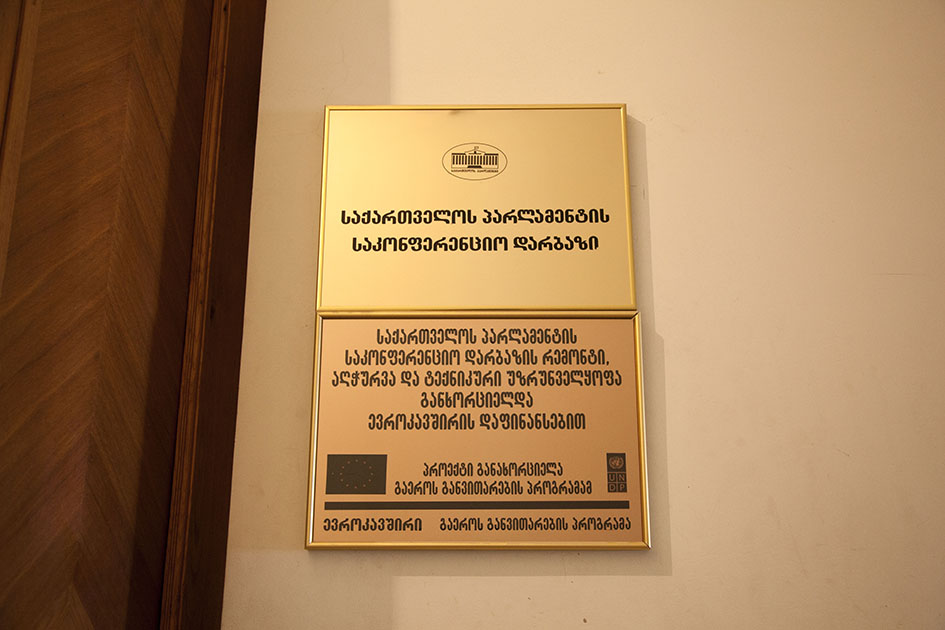
This sign-board reads that the Conference Hall of the Parliament was repaired and technically equipped by the UNDP and EU. Photo by N. Alavidze.
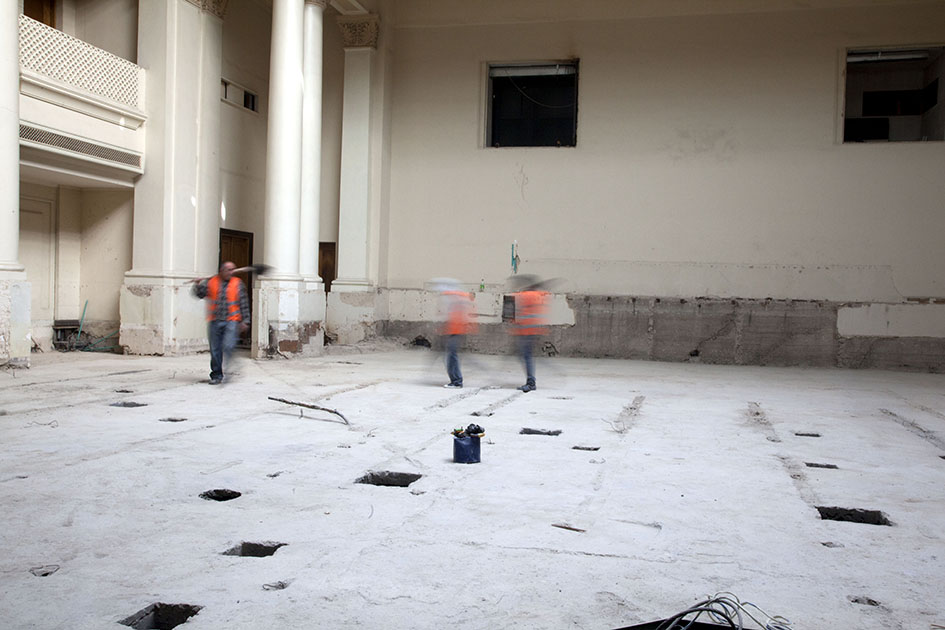
The main Hall of the Parliament, the place where Georgian Independence was declared in 1991; the contractors are hurrying up to finish the repair works by February. Photo by N. Alavidze.
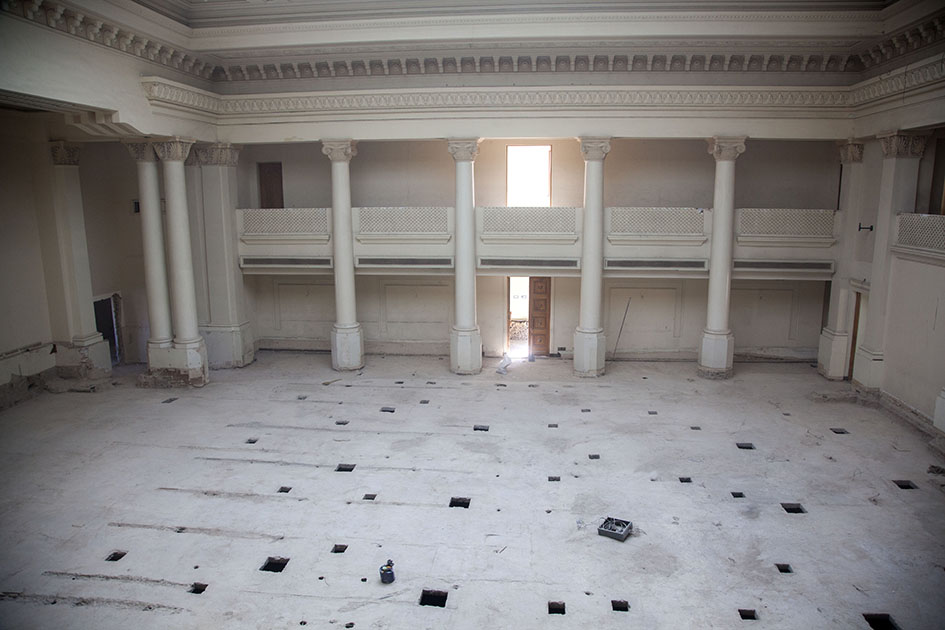
The main Hall of the Parliament; the reconstruction work is still ongoing. Photo by N. Alavidze.
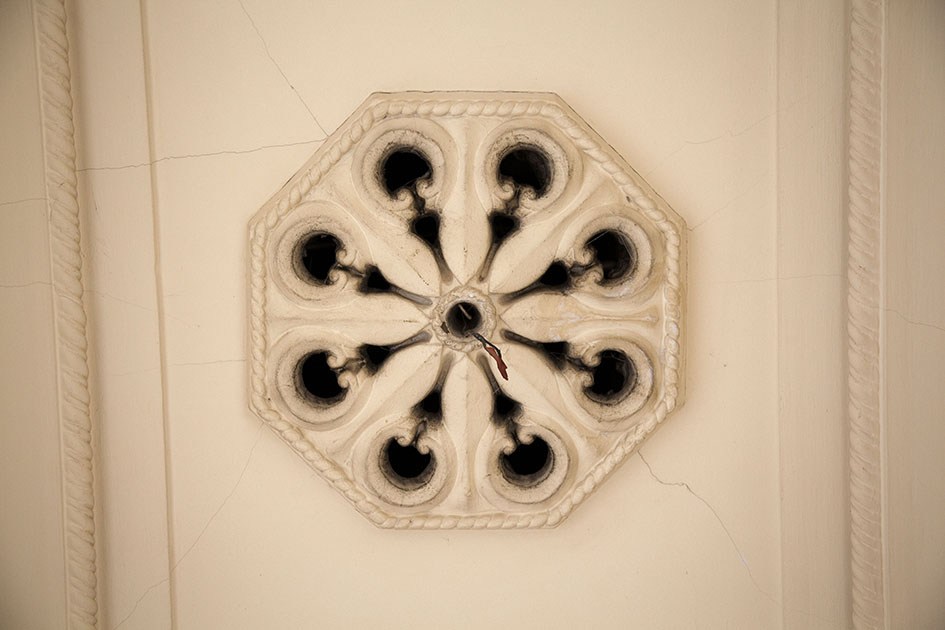
This is the place for the candelabras, including the very famous Vorontsov’ candelabra that were stolen after Parliament moved from Tbilisi to Kutaisi. The artefact is not found yet. Photo by N. Alavidze.
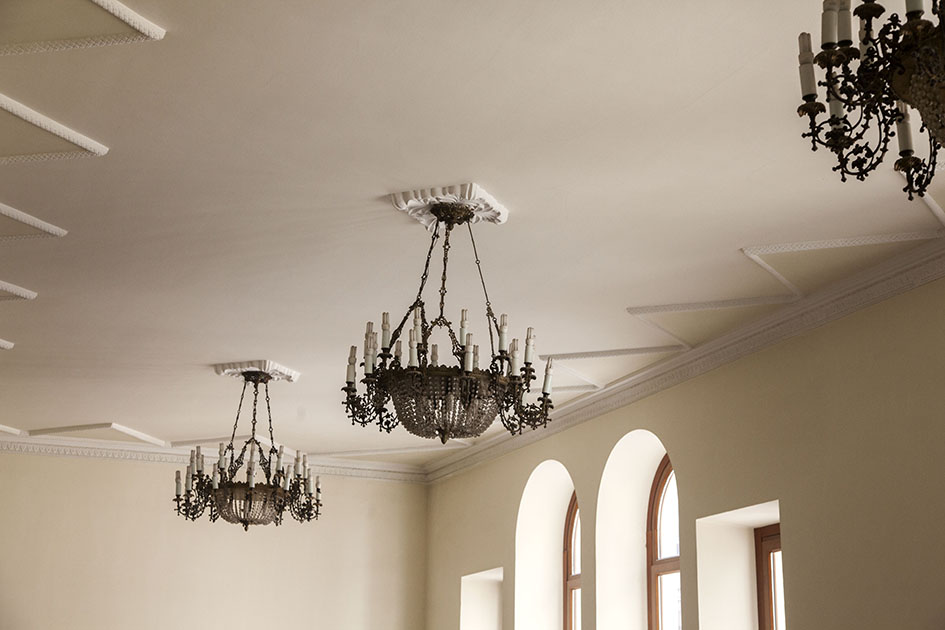
These candelabras were also stolen but found. Photo by N. Alavidze.
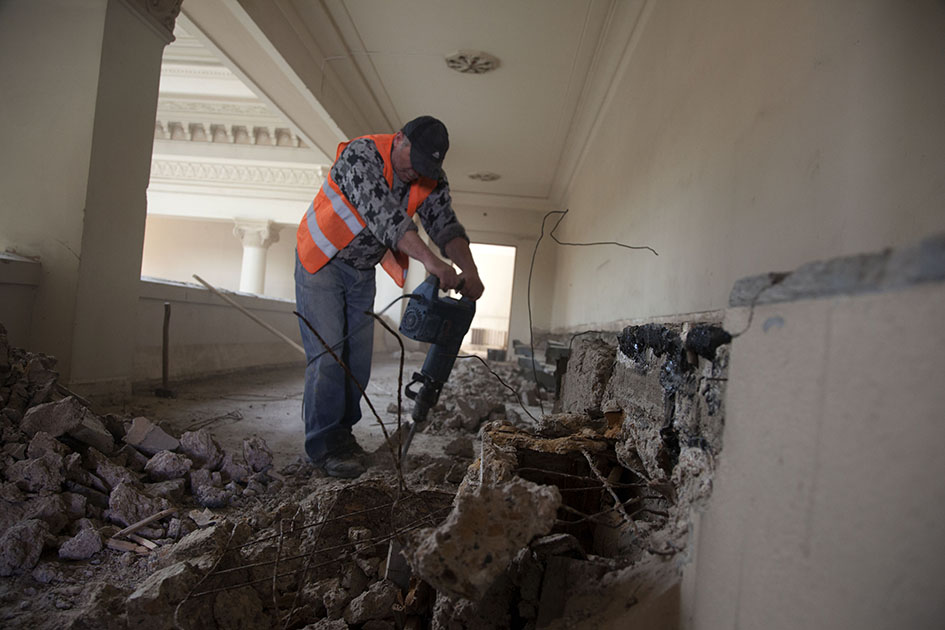
This is the balcony looking down to the main Hall and is planned to make the room for media and video shooting. Photo by N. Alavidze.
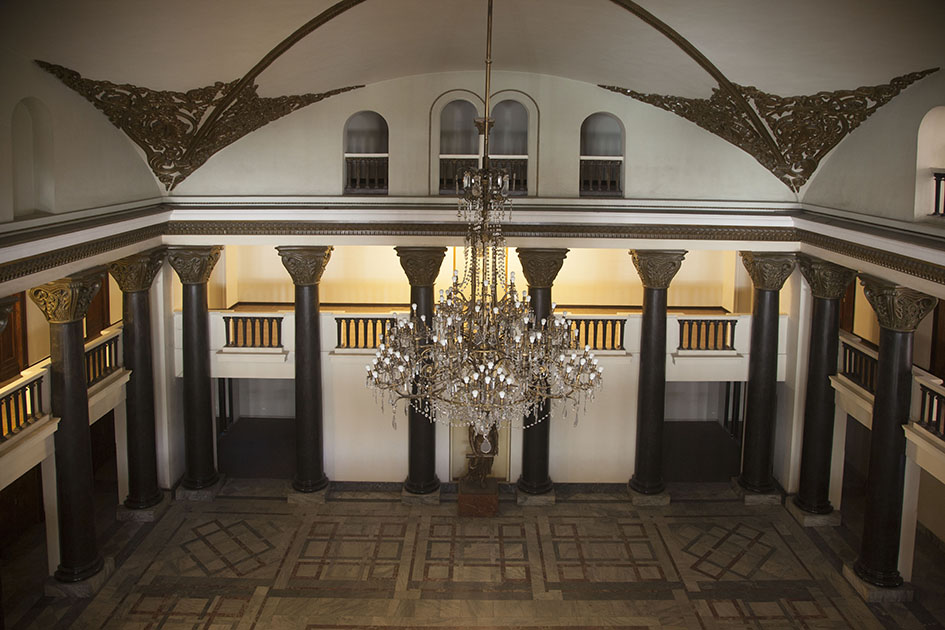
Sony, a Japanese telecommunications company will equip the Parliament building with technics. Photo by N. Alavidze.
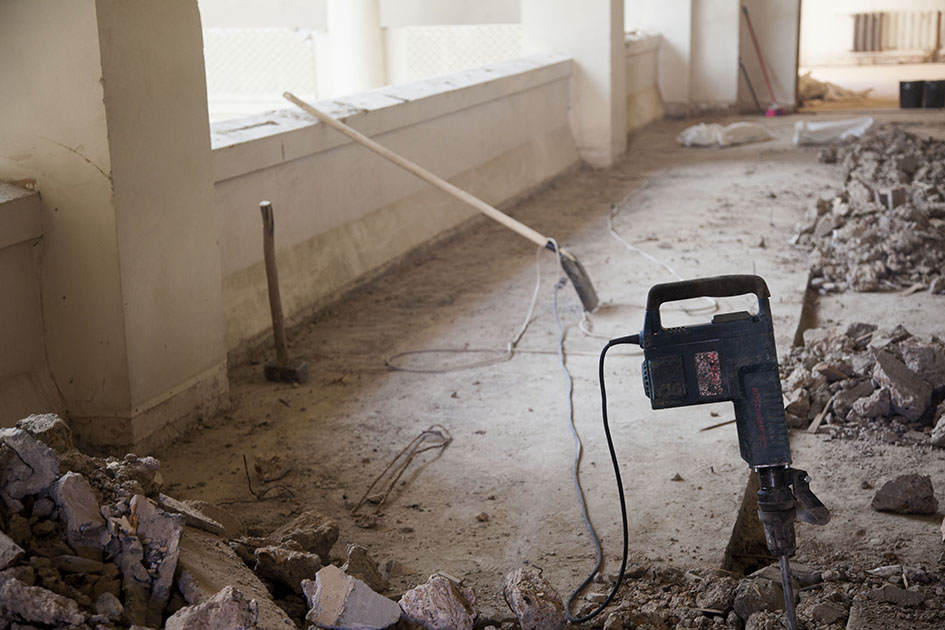
After the Georgian Dream party came into power in October 2012, there was a decision to move Parliament back to Tbilisi. Photo by N. Alavidze.
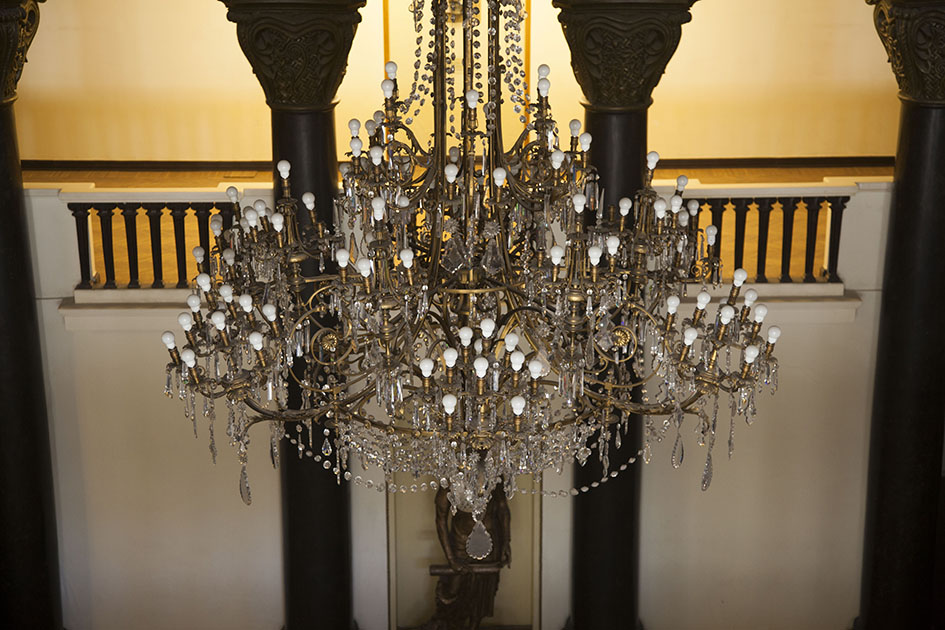
Old building of the Parliament is one of the most original pieces of architecture with its large shape and magnificent design of the Soviet period. Photo by N. Alavidze.
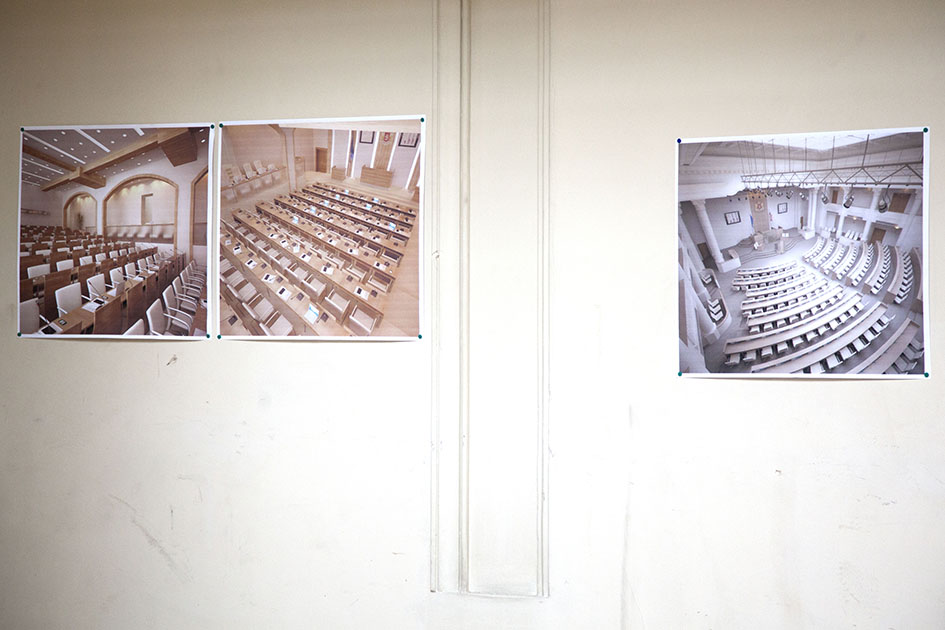
On the wall, there are posters of the Parliament after the reconstruction. Photo by N. Alavidze.
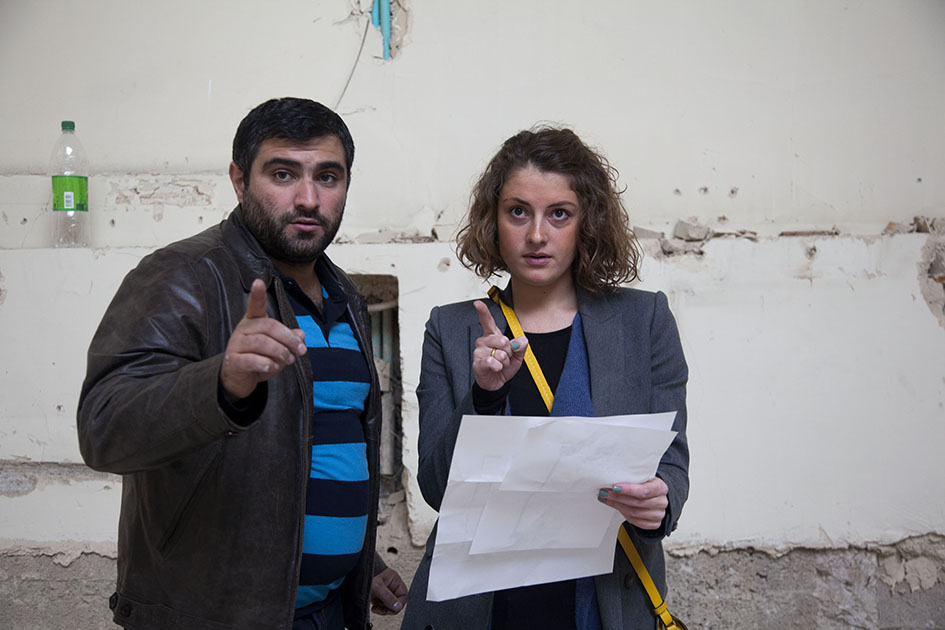
Tamar Mosishvili, the Architect and the grandchild of Vakhtang Khutsishvili who is the builder of the Parliament building, is planning the final details of the reconstructions. Photo by N. Alavidze.
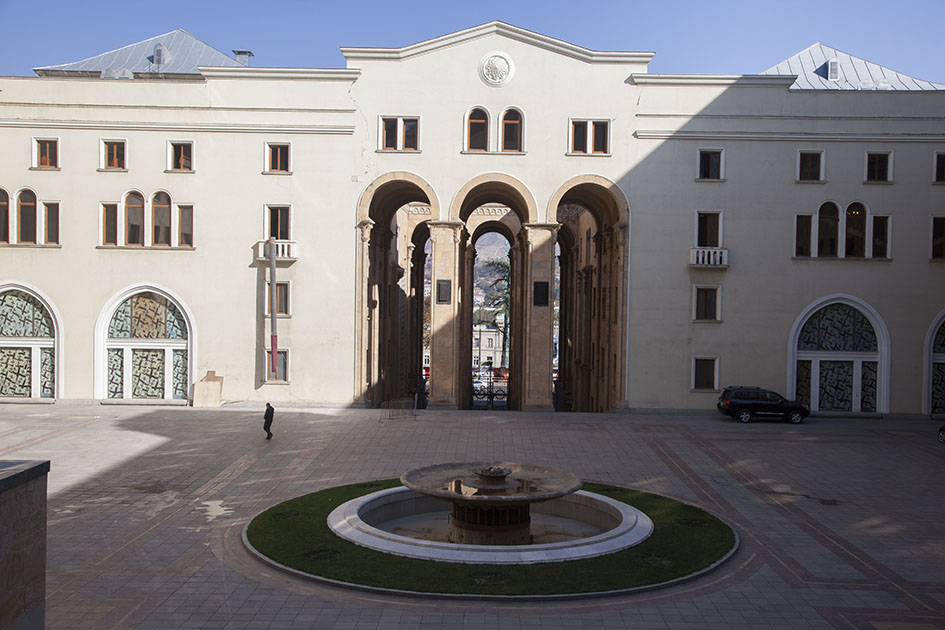
This place is also the memorial of the April 9 tragedy (also known as Tbilisi Massacre, Tbilisi tragedy). In 1989 the anti-Soviet demonstration was dispersed by the Soviet Army at this place, resulting in 20 deaths and hundreds of injuries. Photo by N. Alavidze.
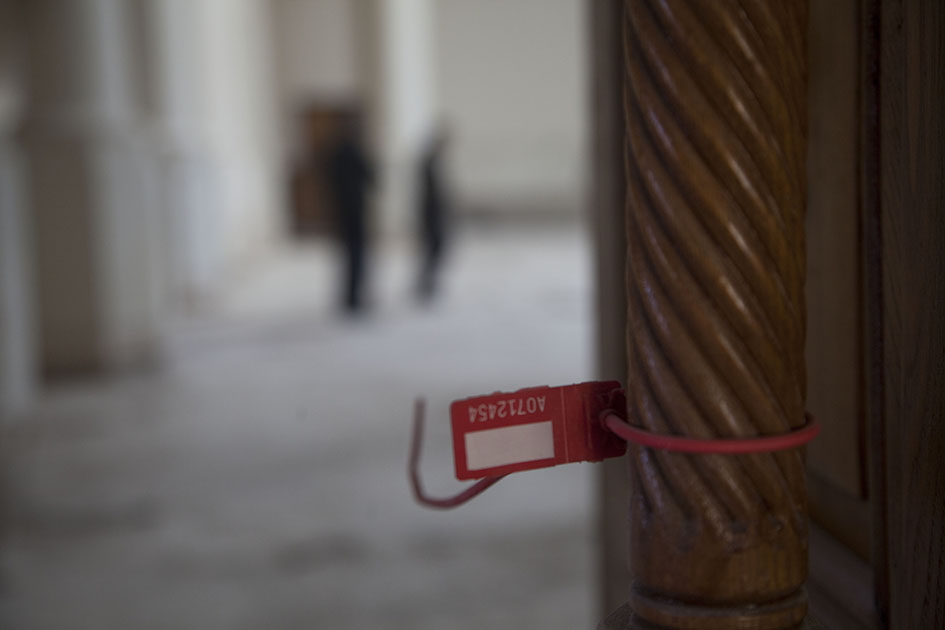
The territory where the historic building is located may become the property of Kutaisi. This idea was considered by the parliamentary majority as a way to bring the Georgian Parliament back to Tbilisi. Photo by N. Alavidze.